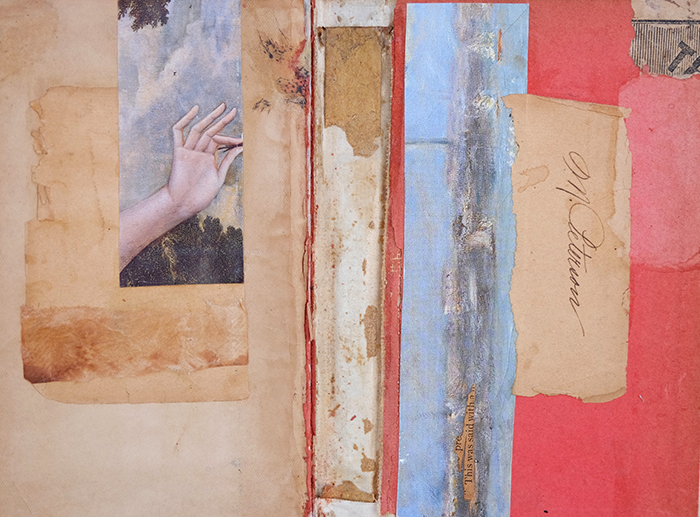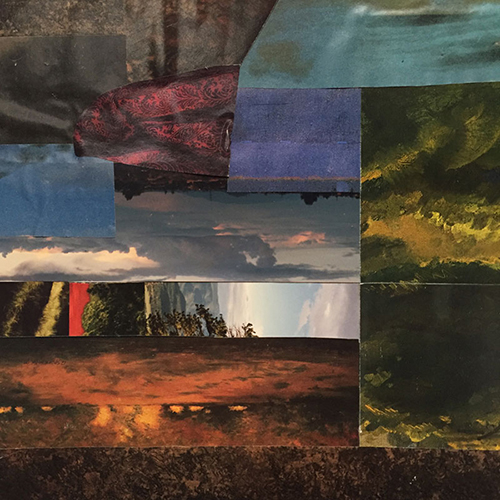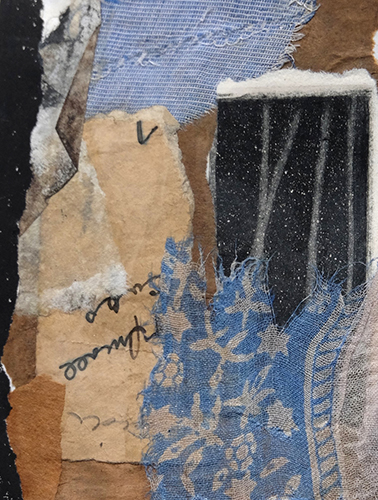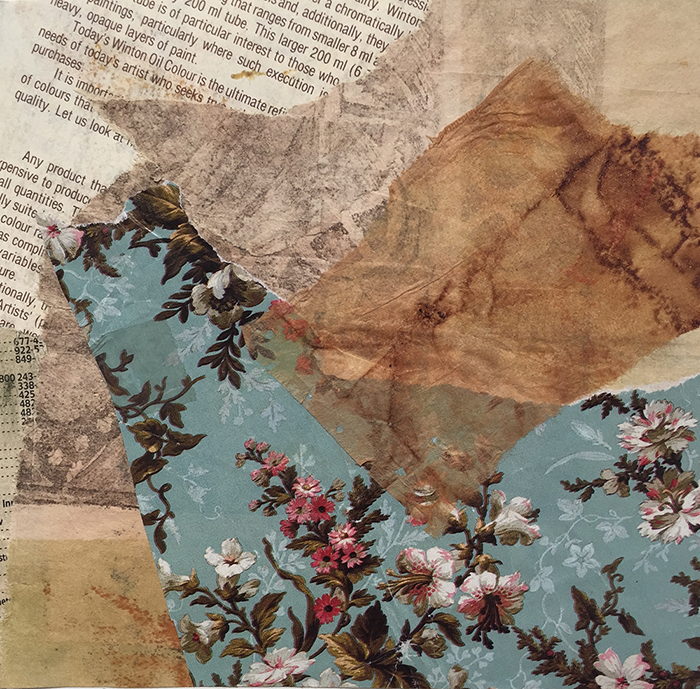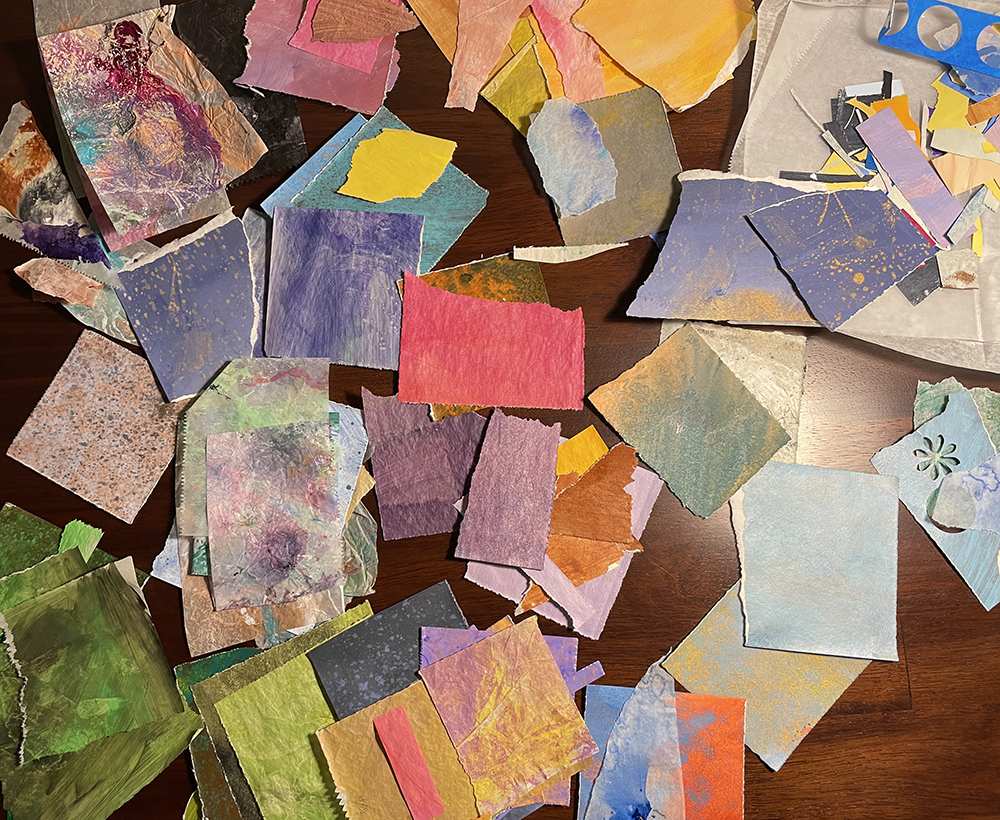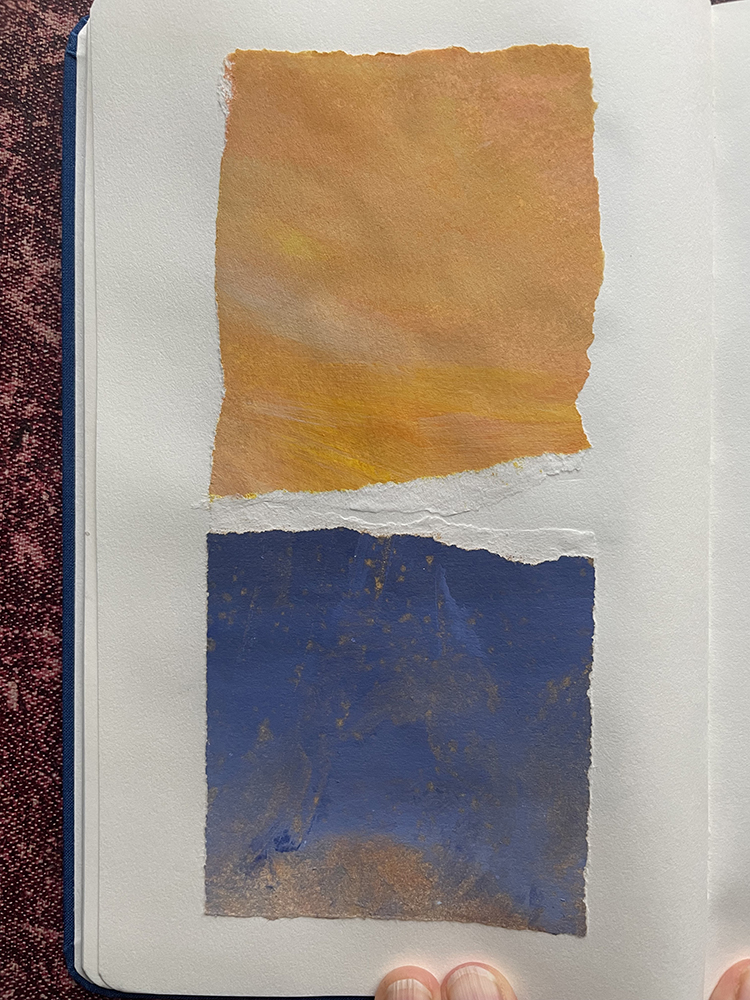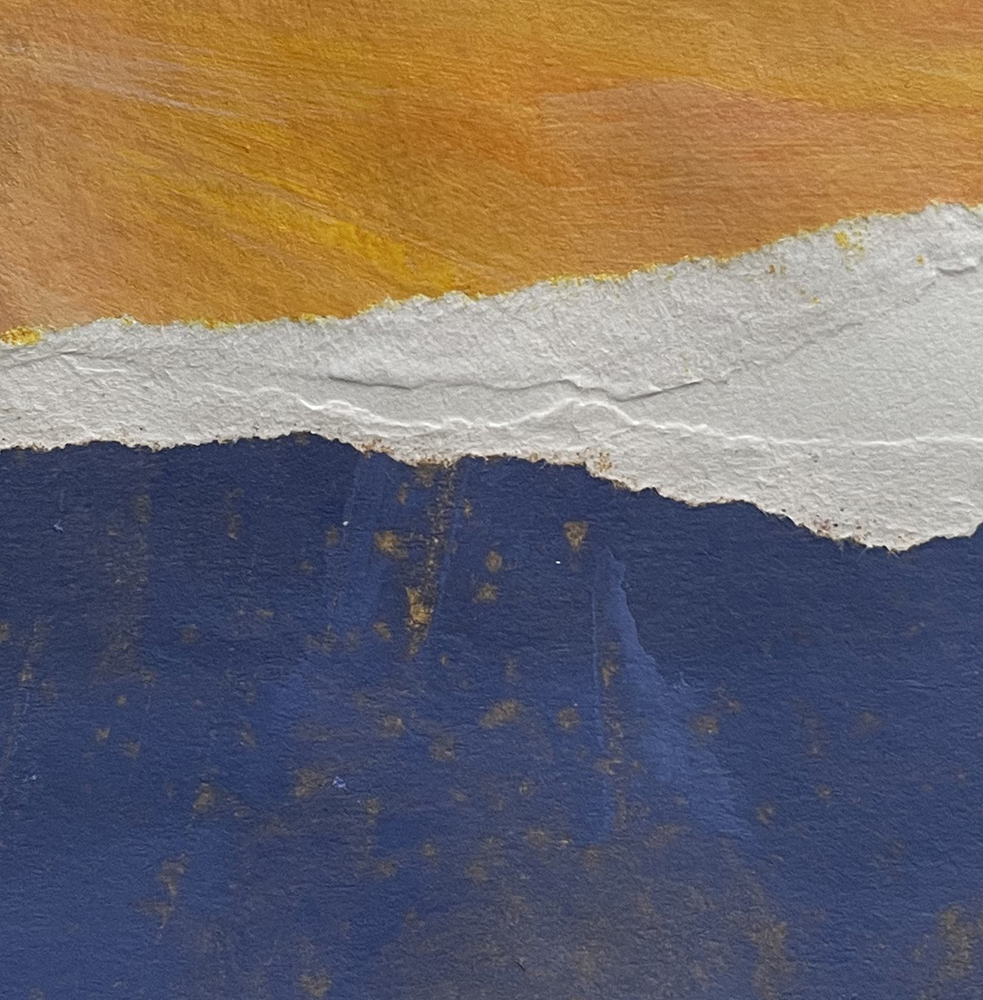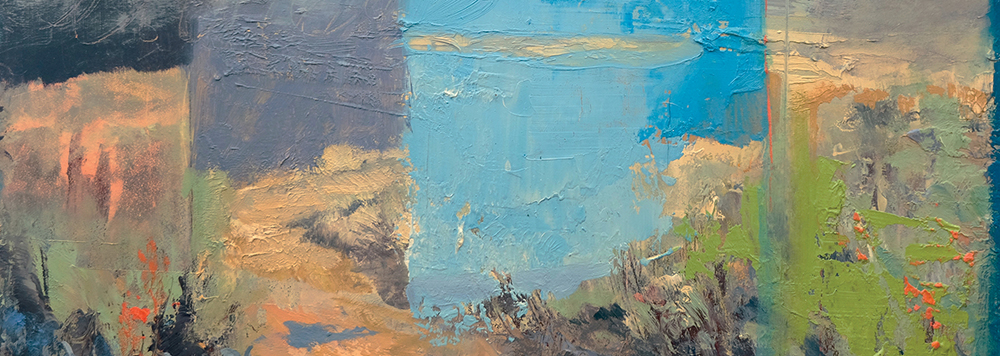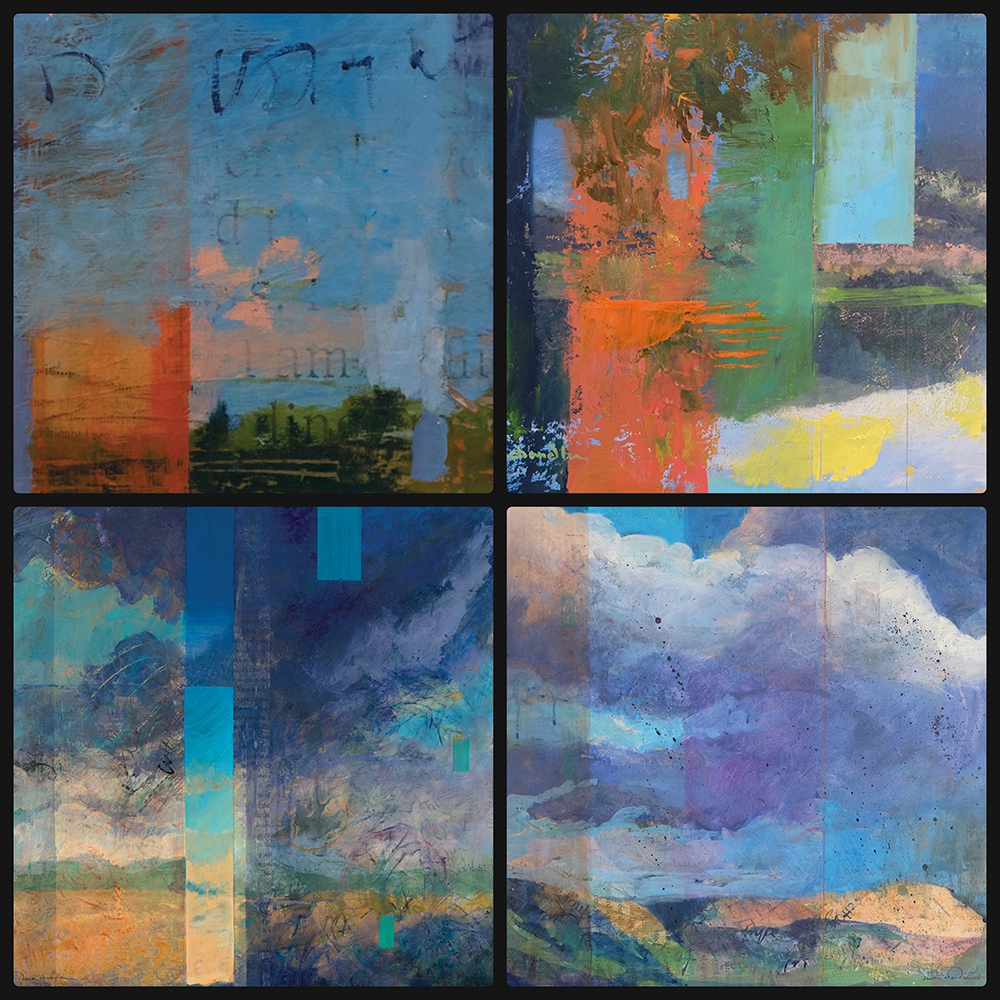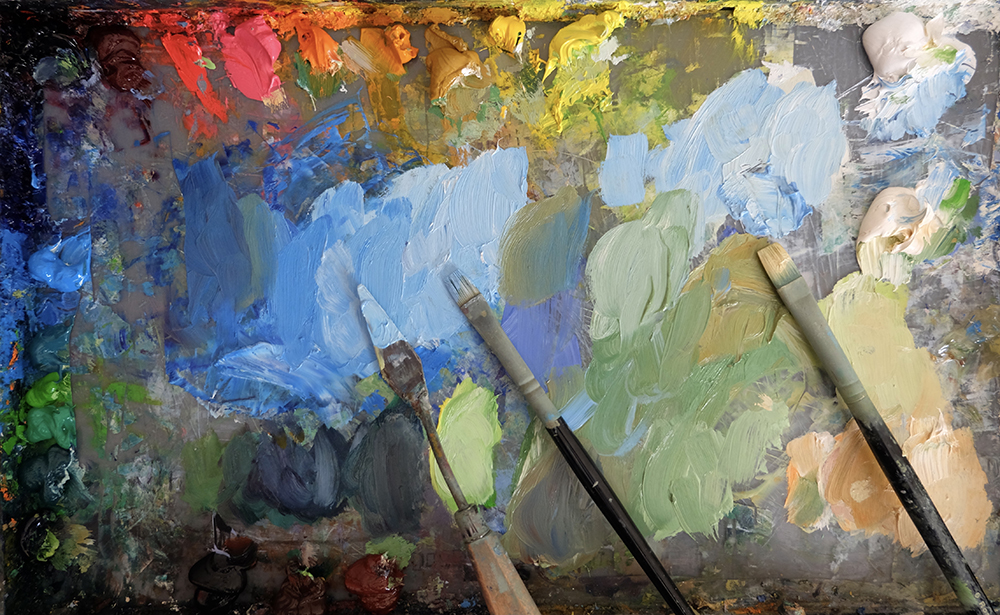musings from the studio and beyond ~
dawn chandler’s reflections on art and life. . . .
tiny little pieces
To view this post with its intended layout flow, view it on the website via your browser.
What amuses me about my little travel art kit quandary mentioned previously is that it was nearly identical to the quandary that kept me awake for nights on end a year ago. That’s when I was trying to figure out how to create an art experience focused on color for the guests of Bishop’s Lodge. What I sought then was a transportable, non-messy medium with an enticing array colors, that is easy-to use, and requires minimal prep and clean-up. Yet none of my “usual” art mediums — oils, acrylics, watercolors, crayons, colored pencils, pastels — met the criteria. Hence my insomnia: What to use? Mind you “insomnia” isn’t hyperbole here; I really was losing sleep over this.
Until I remembered collage.
Collage — the cutting, arranging and gluing of papers and other materials — has been around for centuries (think 17th-century herbariums and 19th-century scrapbooks). Yet it wasn’t recognized as a “real” art form (at least not by the “art establishment”) until the early 20th century. That’s when George Braques and Pablo Picasso began cutting and gluing cubists compositions with miscellaneous papers lying around their homes.
Below, collage through the ages:
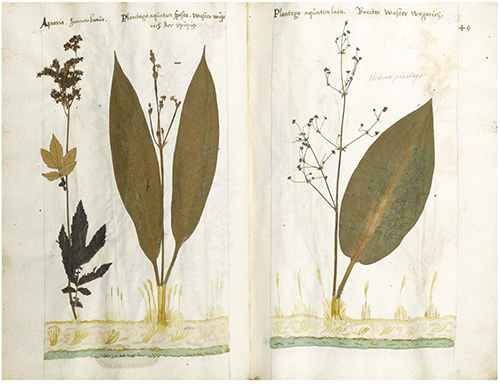
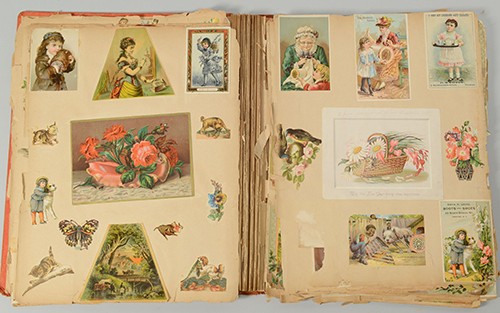
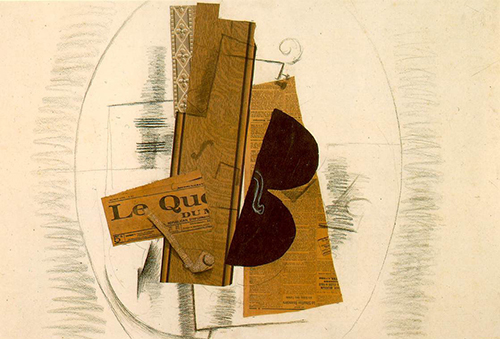
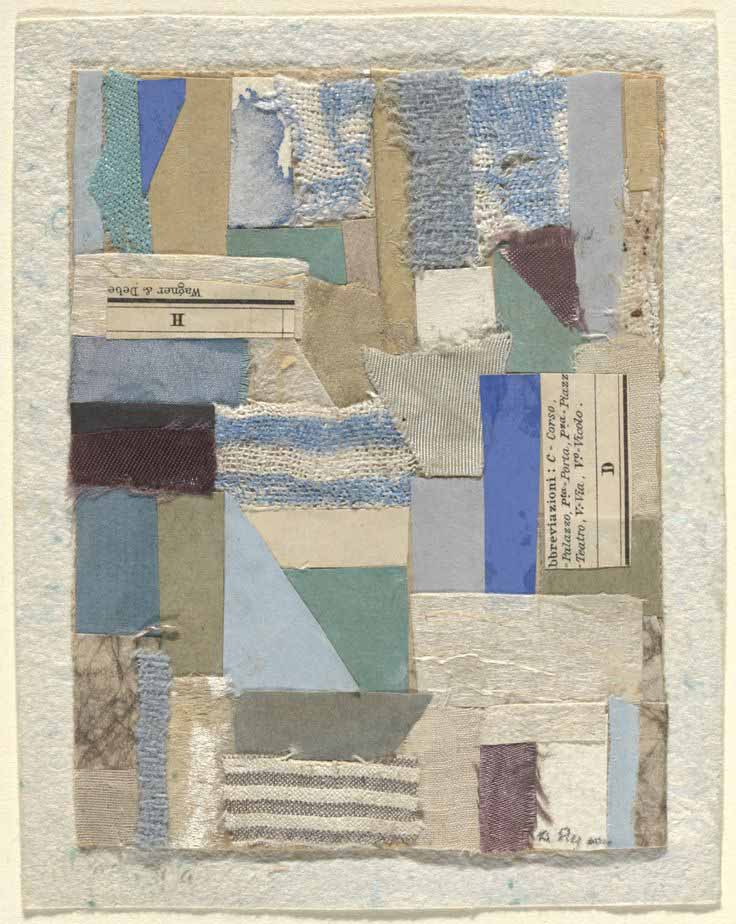
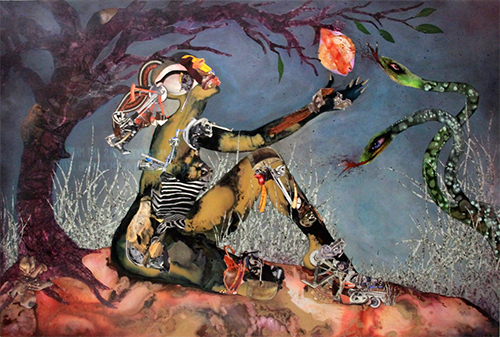
Seventy years later, collage was the means through which I began to really learn about color. It was also my gateway into abstraction. Like those early Cubists, my first collages were made with papers I found lying around my environs. What artistic fodder I found in art school trash bins, secondhand stores, and sidewalks! Newspapers, magazines, old letters and used books, calendars, fabric swatches, wall paper, old photos, wine bottle labels, dried teabag papers and more were my medium. If I could glue it I could use it. My studio overflowed with baskets of found papers as I filled tiny books with my collage creations. My final graduate thesis project was the month of February in collage: Twenty-eight collages presented in 24” x 24” frames in a huge calendar grid on the wall.
Below, among my early explorations in collage, c. 1992 – 94. All of these are just a few inches in scale. From top: Evoking landscape with magazine clippings; collage of brown paper, fabric, 19th-century envelope, etching; collage made with early 20th-century bookbinding, dried teabag paper, 19th-century print, 19th-century signature, clippings from fine art calendars. Also, the image at the top of this post is one of mine made with found papers, including floral wrapping paper and a teabag.
Even now as I paint I approach my canvases (the semi-abstract ones, at least) with a collagist’s eye, as I merge dissimilar elements into a cohesive, lyric composition.
But collaging found papers (papier-trouvé to use the lyrical French term) remains a foundational and much loved form of artistic expression for me.
Yet I knew that for teaching a class in color, using papier-trouvé would not work well; there’s just no continuity to them. I considered pre-packaged bundles of “Collage Papers” sold in art stores, but they, too, lack continuity and consistency. I needed papers of identical texture and sheen, easy to handle without being too fragile, that can take glue well. AND they have to come in a wide range of rich colors.
I couldn’t find anything that matched my criteria.
🤔
Then I hit upon an idea:
Make my own.
This is the third installment of a four-part series on my creation of the Enchanted Color Art Experience for Bishop’s Lodge Resort in Santa Fe.
Read the earlier installments:
I: how to teach your passion?
II: have art, will travel
iv: enchanted color and a small bit of wondrous truth
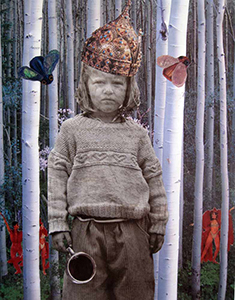
Thank you for being here and reading my musings. If you enjoyed this post and would like to read more, I invite you to subscribe to this, my blog.
Meanwhile, find more of my stories, insights and art here on my website, www.taosdawn.com. Shop my art via my Etsy shop. And please consider joining me for Tuesday Dawnings, my weekly deep breath of uplift, insight, contemplation & creativity. You can find other ways to keep tabs on me here.
Stay safe. Be kind.
~ Dawn Chandler
Santa Fe , New Mexico
Free from social media since 2020
Pictured left: One of my favorite of my early collages made entirely of magazine cut-outs.
have art, will travel
Wrapped in a wool blanket, I take a sip of warming tea. I look out the window and take a deep, satisfied breath as I study a tangle of black branches etched against a frosty golden sky. The falling snow is so fine I can barely make out the individual flakes sifting down, hazing the sunrise into a sort of peach-tinged arctic fog. I’ve never seen anything quite like it. Is this an effect of the lake nearby lake on the light? I wonder.
I check the temperature: 3°. Twenty-two degrees colder than my home 1000+ miles southwest of here. I pull my blanket in a bit closer around me, take another sip of tea, and turn to my writing desk. Dozens of colorful papers are scattered across the surface, inviting my consideration. I gaze over them, my eyes pausing here and there as I make a mental survey.
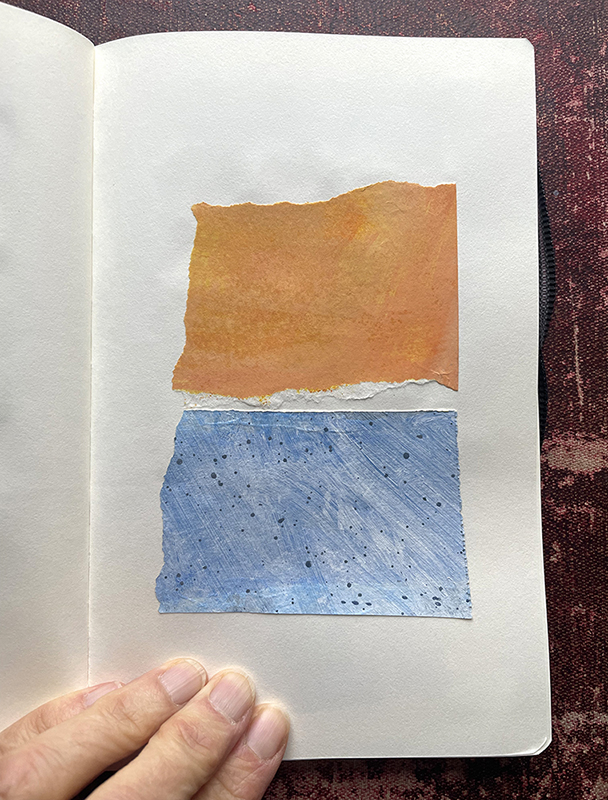
Then my fingers begin to move. I find a piece of paper painted first with yellow, then soft orange over it; it glows warm peach. One edge is torn exposing a white band of the paper’s pure white base. I turn the roughly square-shape paper so that the torn edge is on the bottom, and suddenly that torn white edge conjures a horizon line of snow-white mountains.
My eyes search the other colors scattered across my desk and narrow in on another — this one painted cool blue, with a wash of white across the surface, then a smattering of random grey speckles. It looks like winter rain or snow. My fingers pluck the color from the array and place it underneath the glowing peach color. A landscape emerges: Sunrise glow over an iced-over lake, with snow-covered hills in the distance. Taking a glue stick in hand, I turn over each paper bit, apply glue, then arrange and paste them in my journal.
In a moment I find another piece of warm peach-colored paper. This, too, has a torn edge.
My eye searches, then delights on a slate-blue color tinged with brushstrokes of gold. I arrange them into another composition, another landscape with a gold sunrise sky, distant snow-covered mountains, and a foreground of icy shadow-blue water dotted with gold reeds.
With these hand-painted pieces of paper and glue, I’ve just created in my journal tiny winter landscapes. They’re not masterpieces, nor are they intended to be. They’re simple and a little coarse with their torn edges. Yet to my eye there’s an elegance in their understatement. They make me smile; I feel the warmth of satisfaction in making art.
What I’ve done is I’ve “painted” just now without using a brush or paints. Instead I’ve used paper and glue: I’ve made collages.
Whenever I travel my Muse requires that I pack some means to make art, ideally something with color. But for this trip, limited to carry-on bags, I was uncertain what to bring. I didn’t want TSA to confiscate my pricey watercolors. While that seemed unlikely, the risk was too great. Besides, my current watercolor set-up is a bit bulky for my limited baggage options; same with colored pencils.
Then it occurred to me: Collage.
In the midst of packing I ran into my studio, opened storage boxes and filled an envelop with dozens of pieces of colored papers. I added a large glue-stick and Voila. I had my traveling art kit.
Now, a couple days into my weekend getaway to the upper Midwest, I’ve spent several hours in the warm blissful flow of creation, as I’ve filled pages of my journal with colorful conjurings of winter.
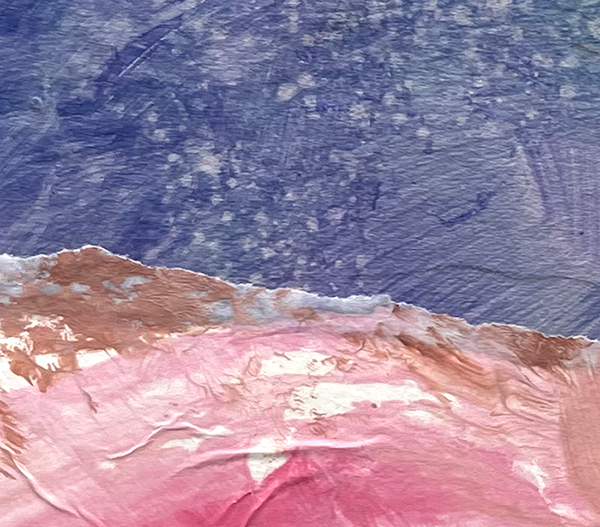
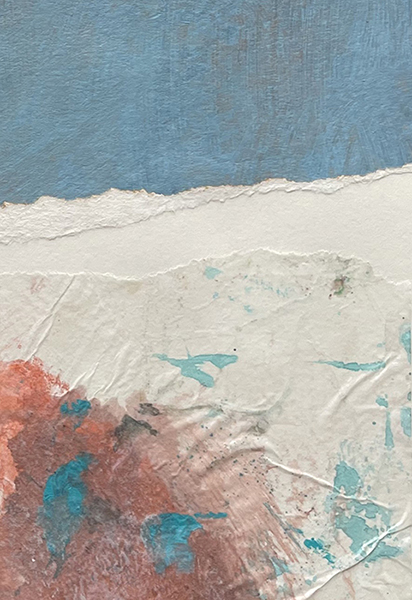
moving across snow
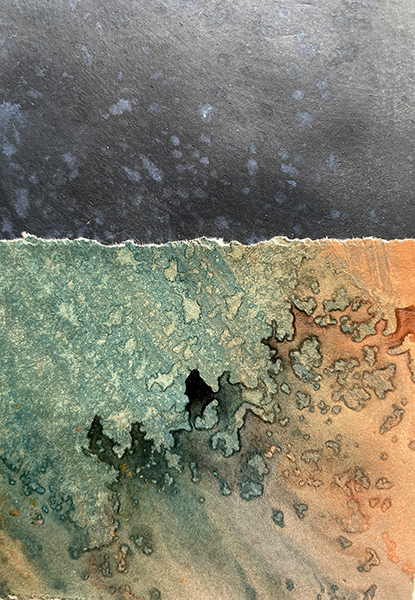
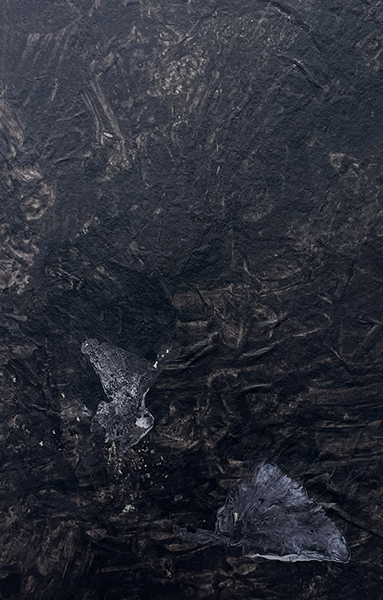
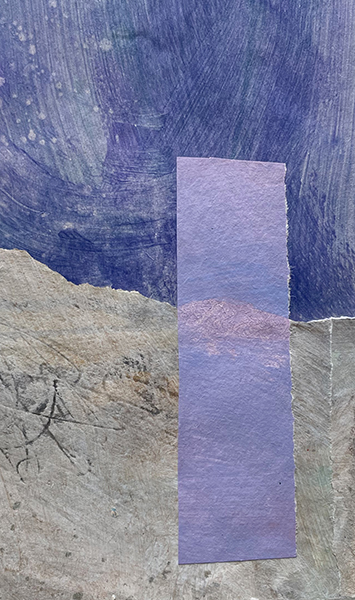
The title of this post hearkens back to my father’s favorite TV show. The title is the only thing this post shares in common with the show!
This is the second installment of a four-part series on my creation of my Enchanted Color Art Experience for Bishop’s Lodge Resort in Santa Fe.
Read the earlier installments:
i: how to teach your passion?
ii: have art, will travel
iii: tiny little pieces
iv: enchanted color and a small bit of wondrous truth
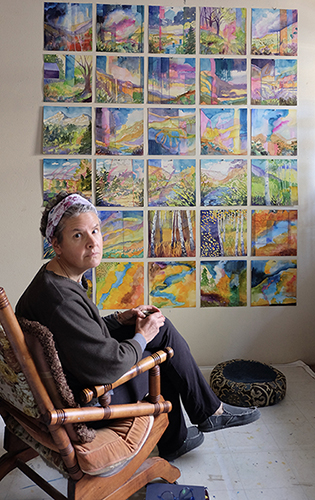
Thank you for being here and reading my musings. If you enjoyed this post and would like to read more, I invite you to subscribe to this, my blog.
Meanwhile, find more of my stories, insights and art here on my website, www.taosdawn.com. Peruse and shop for my art via my Etsy shop. And please consider joining me for Tuesday Dawnings, my weekly deep breath of uplift, insight, contemplation & creativity. Find other ways to keep tabs on me here.
Stay safe. Be kind.
~ Dawn Chandler
Santa Fe , New Mexico
Free from social media since 2020
how to teach your passion?
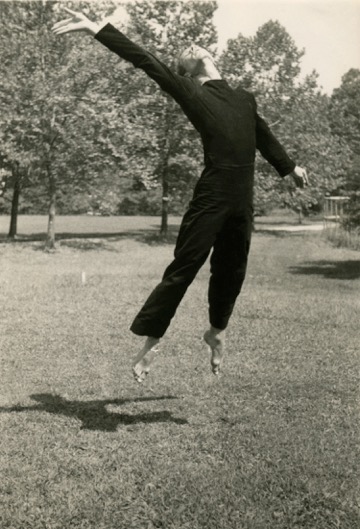
What are you passionate about?
How would you teach your passion?
How would you share it with others?
Light a spark in someone else, so that they might get a glimmer of excitement about it?
This is exactly the challenge that came my way a year ago, and changed completely the trajectory of 2021 for me.
It started in December 2020, when I received a curious message from a woman who had come across my art on Etsy.
She said she loved my paintings, especially my semi-abstract New Mexico landscapes. Might I be interested, she wondered, in providing “Art Experiences” for the guests of their new hotel in Santa Fe, Bishop’s Lodge.

Only vaguely familiar with Bishop’s Lodge, I knew that it was an historic property in the hills north of Santa Fe. I had a vague notion of it having been an inn for some decades, and my sense was that it had seen better days. I’d never been there, and wasn’t even sure if I’d ever even driven by it.
A quick search online revealed that the Lodge had been purchased a few years ago by Auberge Resorts, a company that specializes in luxury destinations, and that they were putting the property through a massive renovation and upgrade, due to open in the summer of 2021.
Hmmmm…..
“Yes,” I responded, “I am interested.”
Never mind that I had no idea what she meant by “art experiences.”
A conversation or two later and I learned that what she was looking for is an immersive art-making experience to take place on-site at the Lodge. Each session would last 2 – 3 hours for up to a half-dozen guests. The sessions would be scheduled several weeks (or even months) in advance. In any given month I might have several sessions booked, or, possibly, none at all. It would just depend on the interests of the individual guests.
Among those guests who sign up for my Art Experience, some might have an art background, though most probably would not.
I would provide all materials. It would be ideal if, at the end of the Art Experience, the guests had a finished artwork to take home with them.
I was intrigued.
“What kind of art experience are you looking for?” I asked.
“Well, I really love your sense of color…
... maybe you could create an Art Experience around color?”
And right there she touched on my passion.
My heart palpitated.
But how to teach color? and in just two or three hours?
Surely if anyone could figure it out, I could?
Couldn’t I?
Yes.
I accepted her invitation to create an Art Experience of color for the guests of Bishop’s Lodge.
Thence began my new year.
….And with it, insomnia as I wondered how the hell I was going to do it.
Images above: Merce Cunningham teaching at Black Mountain College, c. 1940s; artist’s rendition of Bishop’s Lodge Resort, before renovations were completed; detail of Drive Across the High Desert, oil on panel by Dawn Chandler; digital collage of several mixed-media semi-abstract landscape paintings by Dawn Chandler; Dawn Chandler’s oil-painting palette.

Thank you for being here and reading my musings. If you enjoyed this post and would like to read more, I invite you to subscribe to this, my blog.
Meanwhile, find more of my stories, insights and art here on my website, www.taosdawn.com. Peruse and shop for my art via my Etsy shop. And please consider joining me for Tuesday Dawnings, my weekly deep breath of uplift, insight, contemplation & creativity.
Stay safe. Be kind.
~ Dawn Chandler
Santa Fe , New Mexico
Free from social media since 2020
walking away from social media ~ one year later
What was getting to me was the sense that I was being manipulated, that someone else was controlling my attention.
I’d login with seeming innocent intentions — to see what friends were up to, or if anyone appreciated what I’d shared — and plan to spend just a couple of minutes doing it.
But of course it never ended up being “just a couple of minutes.” Inevitably it would turn into quite a few “couple of minutes.” I’d glance at the clock upon logging out and feel an ache of regret. Did I really just burn up that much time?!

Image by Sergy Nivens.
It didn’t matter how little or much time I spent there, it always — always — sapped my focus from how I had intended to spend my day. My mental acuity vanished as my thoughts scattered and ricocheted after scrolling FaceBook and Instagram. Even if my engagement was primarily upbeat (I’d blocked politics, news and unpleasant people ages ago), social media always carried my imagination away from the focused work I wanted and needed to do. Every time I logged on, I tacitly agreed to have my attention and energy hijacked away from my here and now.

Image by Sergy Nivens.
Furthermore, despite promises of enriching my life and deepening my friendships, I had the strong sense it was doing the opposite. Although some interactions were enjoyable, I noticed that my social media engagement seemed to be dulling my attention and mental sharpness with a predominantly slick and sticky film of crowded nattering, glibness and evermore mental and emotional clutter.
I sensed this during my years of social media use, but it wasn’t until I finally walked away from social media last June that I realized the absolute truth of it.
When finally I hit the Permanently delete my account button on FaceBook, I was overcome with an unmistakable rush.
It was the rush of LIBERATION.
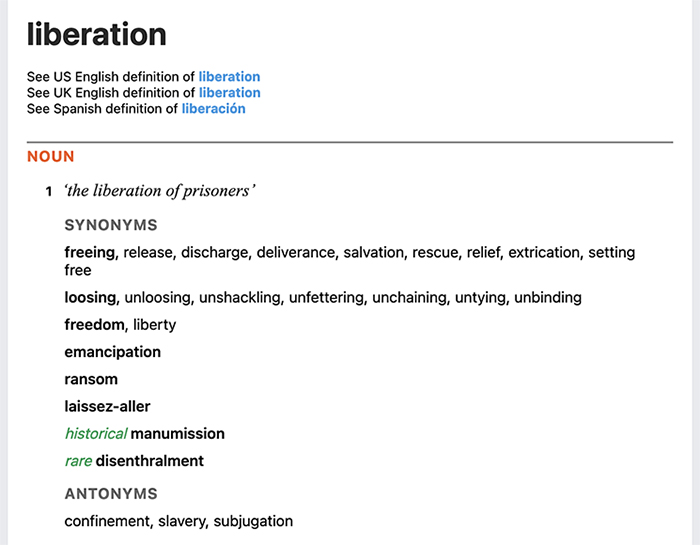
Definition via lexico.com
It was as though I’d been released from a surreal other dimension. In an instant I felt lighter, carefree.
Until I remembered that I was only partly liberated.
I’d freed myself from FaceBook, but I was still chained to Instagram, and the thought of that chain made me queasy.
Instagram was harder for me to leave. As a visual artist, I’m a sucker for all things visually enticing, which is pretty much the definition of Instagram. And I had been convinced that social media — and IG especially — was required to be a successful 21st-century artist.
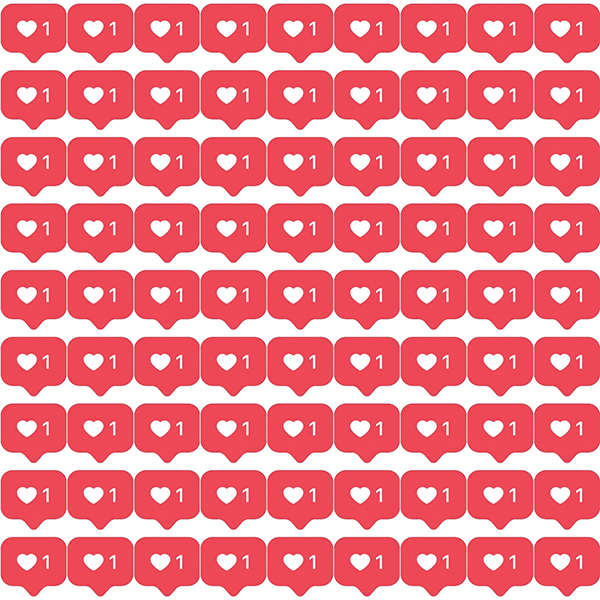
But Instagram took even more of my time and energy than Facebook. I spent hours carefully tweaking images and curating my post feed with an eye toward artistry, beauty and cohesion. I paid for image apps, advertising, and compiled lengthy lists of hashtags all in hopes of enticing more Likes/hearts.
I took a workshop in How to Build a Following on Instagram, and paid a hefty annual fee for a social media scheduling app that allowed me to plan my posts days, weeks even months in advance. I blocked out hours each week to create, plan, schedule and engage with “content.” And of course I checked for approval compulsively, my validation as an artist sinking to how many cartoon hearts and “followers” I’d gleaned.
Guess what?
Time spent on Instagram supposedly promoting my art meant time away from the actual making of art.
If I was scrolling, then I sure as hell wasn’t painting.
Originally when I made the decision to leave FaceBook, I decided I would stay on Instagram another month or two at least, and then assess how I was managing it. Was it possible for me to maintain and reap the purported benefits of IG without letting it hijack my time and ego?
Maybe?
Not. A. Chance.
Maybe other folks can do that, but I knew from past experience that I could not. The fact that monstrous fortunes have been invested to engineer social media to be as seductive, irresistible and addictive as possible is too much tech and psychological wizardry aimed at ensnaring my ego for me to fend off the seduction with “moderation.”
And even if I could, the thought of still being tethered to any of these addictive platforms turned my queasiness into literal nausea.
In the end, it was a 19-year-old professional sport climber who removed any hesitancy I had about leaving Instagram. A couple hours after I deleted my FaceBook account, I read On Social Media and Character, a post by Cal Newport, author of the indispensable Digital Minimalism. In it he relays the story of sport climber Madison Fischer and her struggle with — and ultimate release from — her obsession with social media.
Cal’s post promptly lead me to read Madison’s own post Why Ditching Instagram Earned Me the Podium
That was all it took: Four hours after deleting my FaceBook account, I deleted my Instagram account.
Permanently.
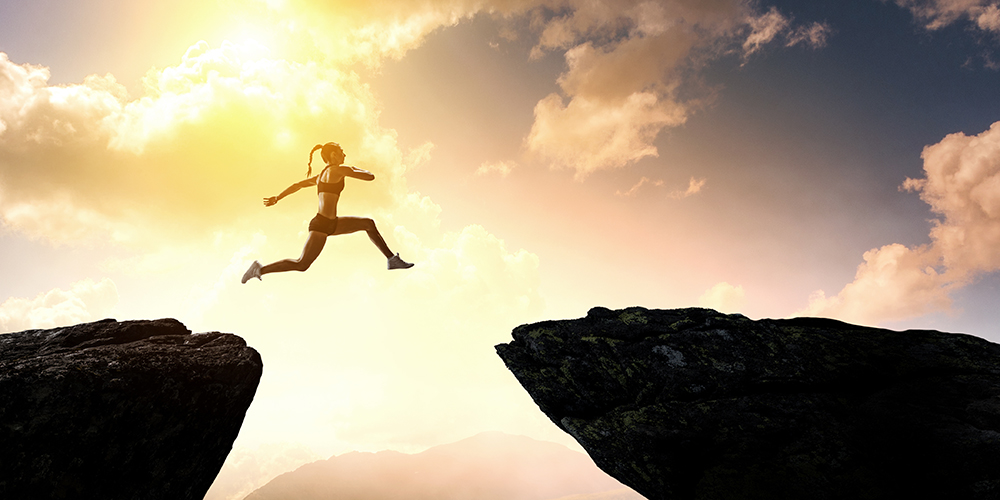
That was a year ago.
What has life been like since?
It has felt…. s p a c i o u s.
More than anything what I have experienced is an opening-up.
The first time I went to paint after killing my FaceBook and Instagram accounts, I experienced a remarkable feeling of weightlessness, of freedom. I remember standing in front of my easel, my eyes suddenly wide and saying aloud to myself with a tone of awe, I can paint anything I want now!
Which is interesting. For of course I could always paint whatever I wanted.
Yet now without the crowd on social media judging what I shared, suddenly I became aware of just how much I had let my desire for Likes dictate what kind of art I worked on and shared.
Now liberated from the gerbil wheel of garnering Likes, I had freed myself to focus on work that likely would have been less “popular” on my FaceBook and Instagram feeds, but was ultimately more challenging — and therefore more interesting and satisfying — for me to create. Work that stretches me.
Another thing I noticed was that the instant I deleted my accounts, I became calmer. It was as though a stadium roar in my head was suddenly silenced. I felt present, my thoughts clear.
Having eschewed FaceBook and Instagram, I don’t look at screens nearly as much as I used to, and that has opened up time for more analog pleasures like reading real books, writing real letters — two slow and thoughtful activities among many that are deeply important to me but that had become diminished by time on social media.
Leaving social media has made space and time in my life for more solitude. For contemplation.
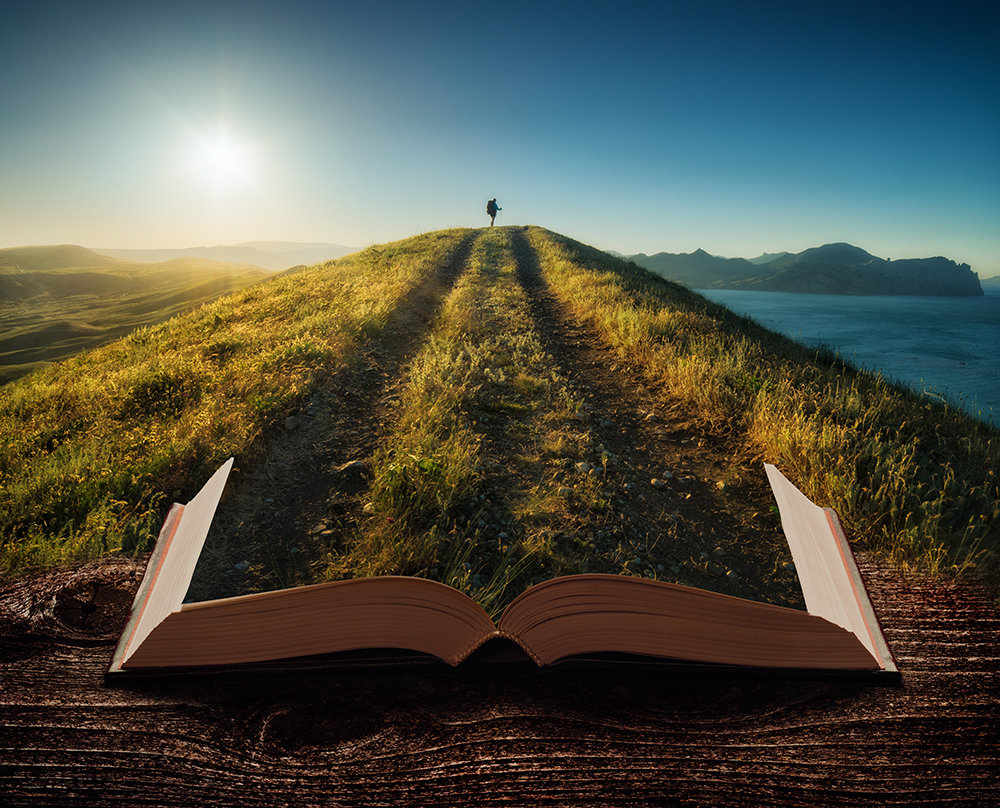
Image by Vitalii Bashkatov.
Also, it’s interesting to note that some of my friendships have deepened since leaving Facebook and Instagram. Rather than “connecting” via public broadcasts shared with everyone and no one in particular, certain friends and I are back to having real conversations. We are picking up the phone, we are writing letters. Our communications have become slower, yet more considered, more enriching.
It’s been lovely.
As to the worry about whether a 21st-century artist can survive and succeed without being on social media, that worry proved to be for naught. Case in point: a rather astonishing creative opportunity has come my way despite not being on social media. I’m convinced that the space and creative focus I’ve found since leaving the distractions of FaceBook and Instagram allowed me to do the creative work that ultimately lead to this opportunity.
I should emphasize that by leaving social media, I neither left the internet nor walked away from technology. Rather I’ve become much more mindful of and deliberate in the ways I engage with tech. To use Cal Newport’s term, I’ve sought to become a digital minimalist.
Digital Minimalism: A philosophy of technology use in which you focus your online time on a small number of carefully selected and optimized activities that strongly support things you value, and then happily miss out on everything else.
~ Cal Newport, Digital Minimalism
Since walking away from FaceBook and Instagram, there are people whom I was very fond of on those platforms with whom I’m not in touch much anymore. But I am confident that if they and I are meant to have meaningful friendships, then the universe eventually will find a way to put us in touch.
And sure, I’m not up on the latest fad or meme or viral video or political grievance or whosie-whatsit.
I don’t miss any of that.
You know what the real downside of my leaving social media is?
.
. .
. . .
. . . .
When I think of it, I’ll be sure to let you know.

recommended reading
Digital Minimalism: Choosing a Focused Life in a Noisy World by Cal Newport
The War of Art by Steve Pressfield
Ten Arguments for Deleting Your Social Media Accounts Right Now by Jaron Lanier
The Shallows: What the Internet is Doing to Our Brains by Nicholas Carr
Atomic Habits: An Easy & Proven Way to Build Good Habits & Break Bad Ones by James Clear
Essentialism: The Disciplined Pursuit of Less by Greg McKeown
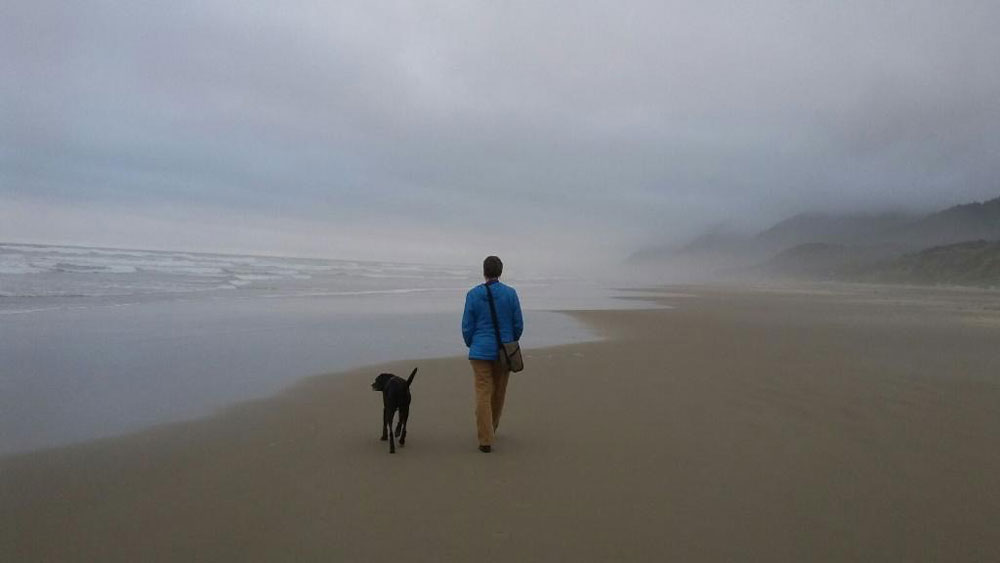
Thank you for being here and reading my musings. If you enjoyed this post and would like to read more, I invite you to subscribe to this, my blog.
Meanwhile, find more of my stories, insights and art here on my website, www.taosdawn.com. Peruse and shop for my art via my Etsy shop. And please consider joining me for Tuesday Dawnings, my weekly deep breath of uplift, insight, contemplation & creativity.
Stay safe. Be kind.
~ Dawn Chandler
Santa Fe , New Mexico
Free from social media since 2020
My sweet pup & me on the Oregon coast.
Photo by ace photographer Joe T.R. Beman.
spring & the hardest color to paint
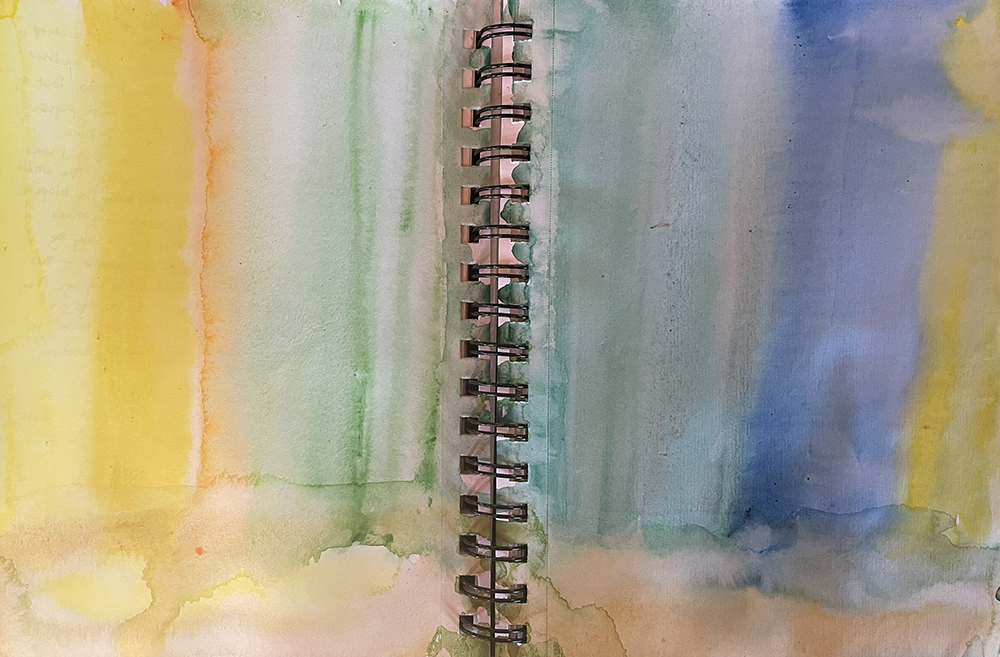
As a young art student I often heard that one color is especially hard to paint .
Care to guess which one?
For the untrained eye it can be intimidating to look out to a verdant landscape and figure out now how to differentiate and mix green.
Maybe that’s why a comment my Aunt Anne made to me more than thirty years ago was so eye-opening to me.
It was late May of my first year in grad school, and I had just arrived on Mount Desert Island to spend the summer living with her. The lilac were just coming into bloom in Maine — quite a bit later than down in Philadelphia.
Soon after I arrived my aunt gave me a tour of the island. At one point during our drive, she gestured to the trees ahead and said, “I love these soft greens of Spring; they’re so varied. By mid-summer the trees all become the same green and it feels heavy and oppressive.”
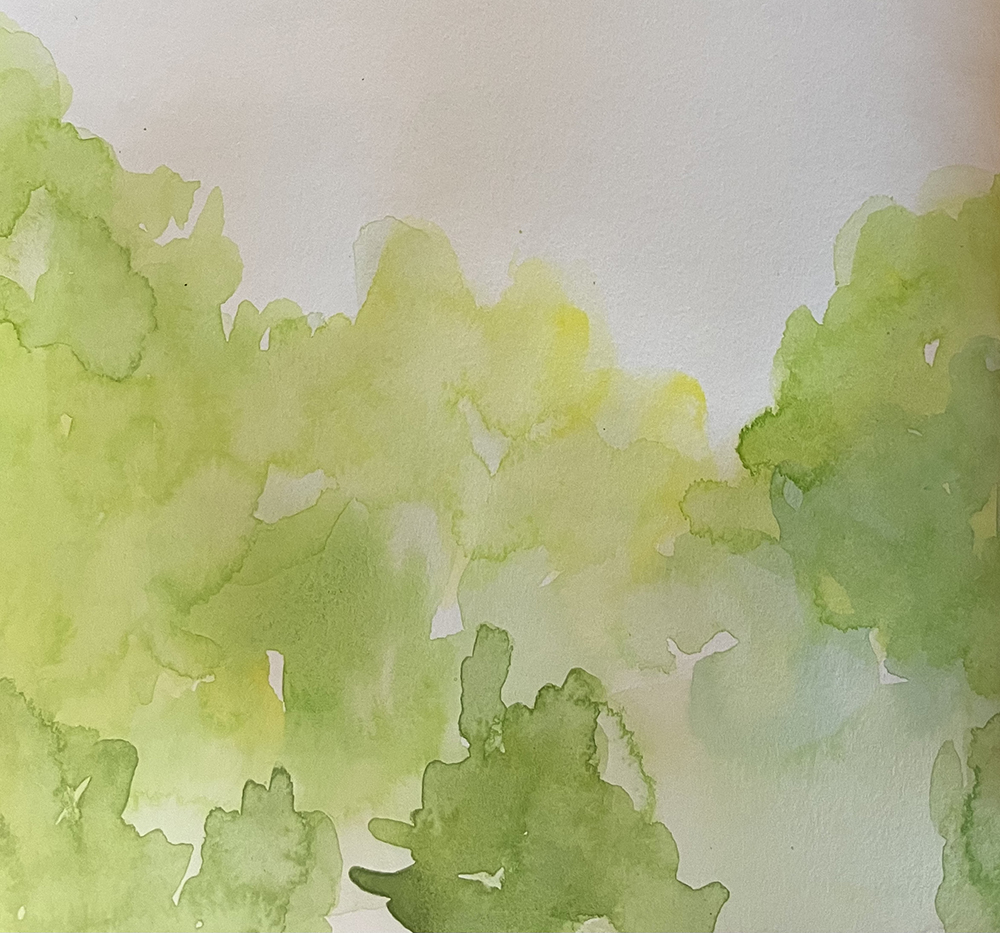
I was struck.
How had I, an aspiring painter, lived into my twenties without noticing the variety of green before?
Was it because in my childhood the showy pinks, purples and yellows of springtime blooms stole my attention?
Or had I simply spent too many springs dreaming of being elsewhere?
Year after year of my high school and college years I obsessively yearned for summer. For summertime meant heading west for three months of adventure in New Mexico! In my youth, spring was something to get through till summer.
No wonder I paid no mind to spring subtleties; they were beyond me.
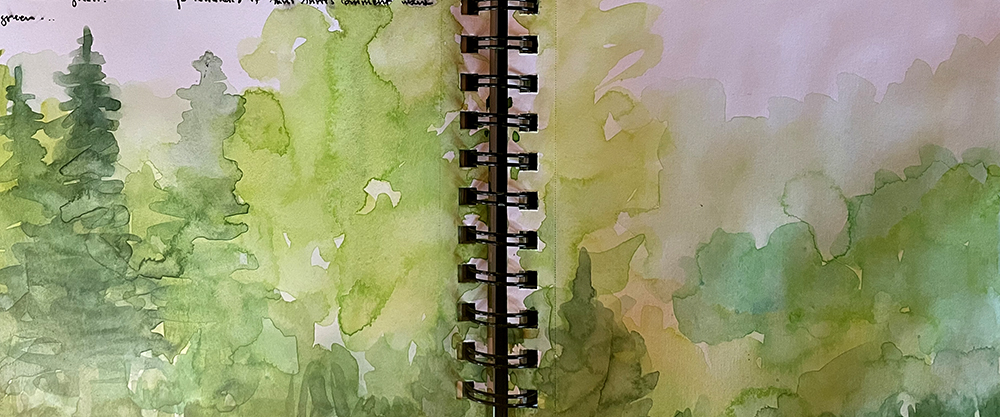
In the decades since those youthful summer high-adventure obsessions, I’ve striven to become more present. I don’t know if that’s just me, or an age thing. But I do know that this year especially I’ve been even more attuned to the nuanced greening of spring. I’ve thought often of my aunt’s observation and how resonates for me still.
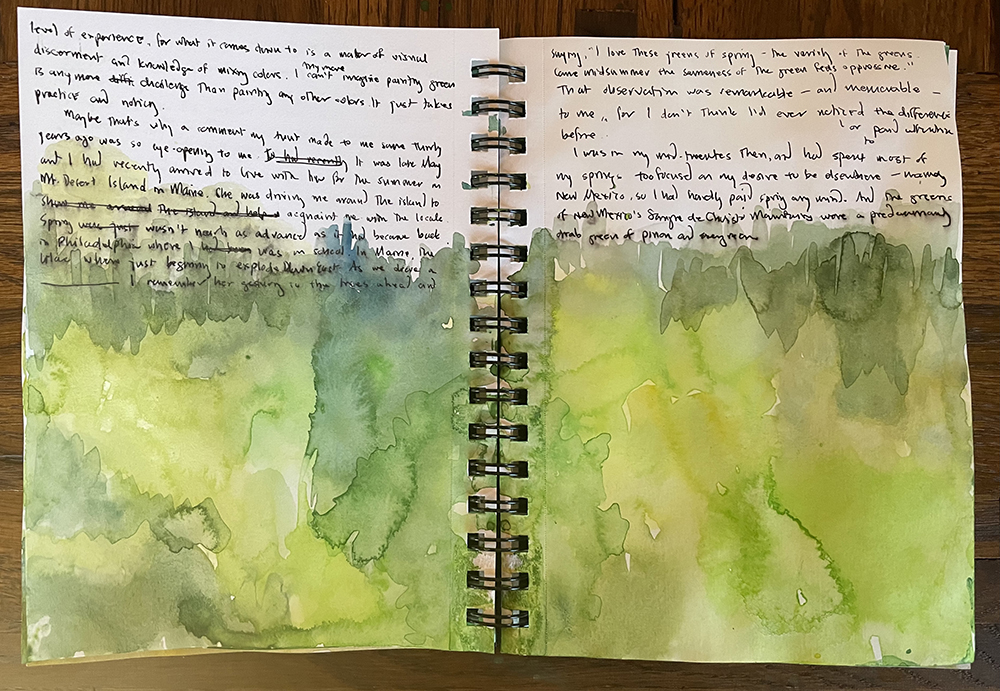
I’m writing this in Summit County, Colorado. As I made the drive last week from 7000 ft Santa Fe to 9000 ft Frisco, it seemed I was traveling backwards in time. Spring is a longtime coming up here. As I climbed in elevation, I was let down to realize I’m too early for the aspen leaves. In late May the Rockies in these parts are cloaked with the drab brownish-green of lodgepole pine, and tawny grey curtains of leafless aspen glens. Snow still caps the surrounding peaks, and streams are edged in ice. The other day a hike up to my favorite aspen grove was an immersion into brown, black, white and grey, with nary a sign of green in the branches.
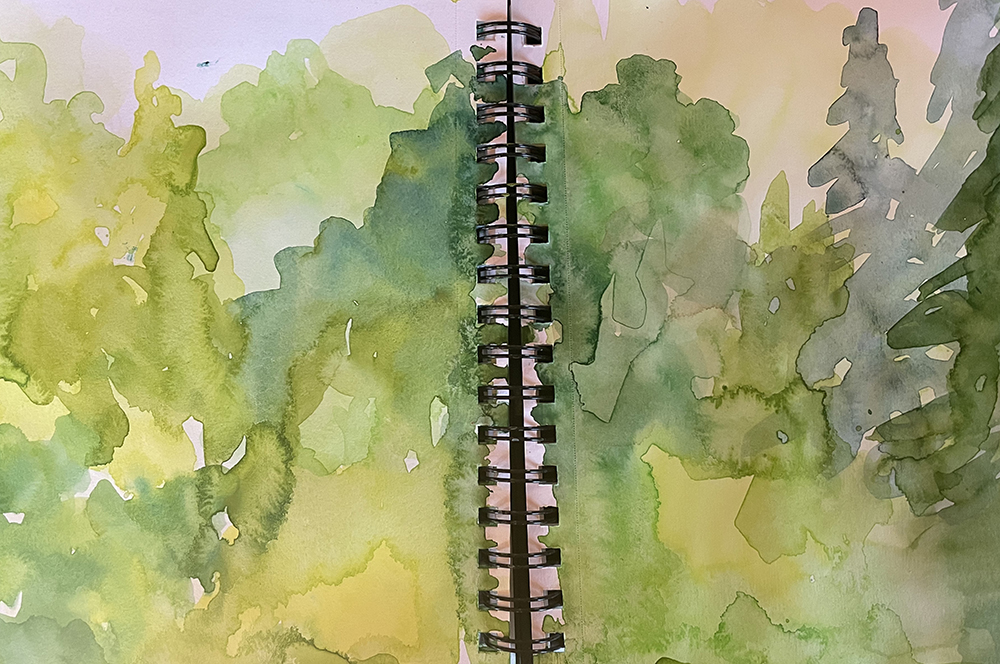
But today?
Today all that seems to be changing. On sunny slopes the color of the Rockies is beginning to transform. Along a bright brook the first hint of green is exhaling among the aspens; brown buds are beginning to unfurl into young yellow-green leaves. As I pause again just now and let my gaze linger, I note subtle variations of green and think of how pleased my aunt would be.
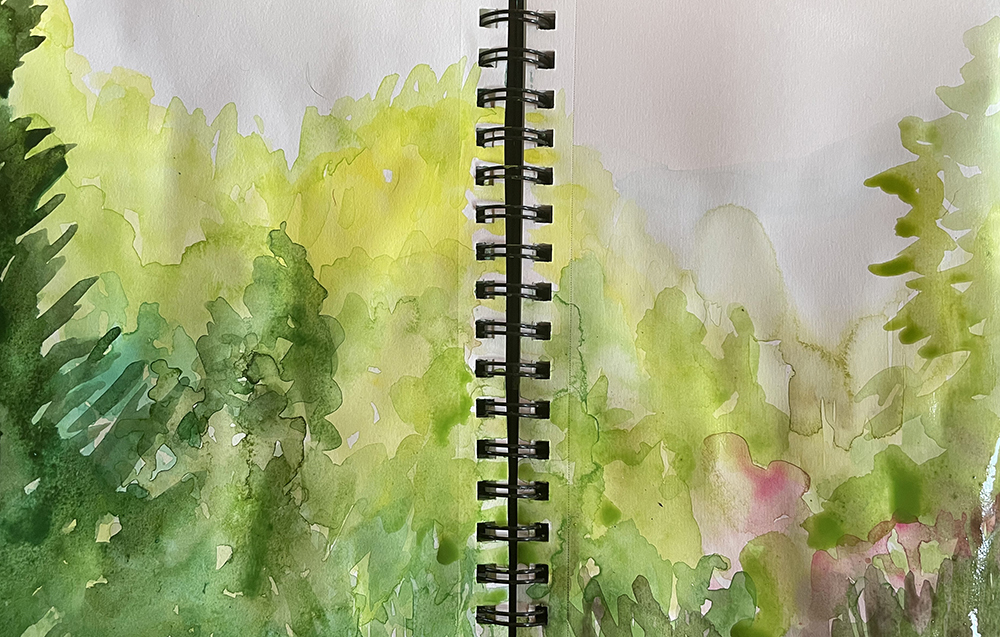
And when I swirl my brush on my palette just now, I realize that, whenever I pause to really notice and consider the color in the landscape and on my palette, painting green isn’t so intimidating after all.
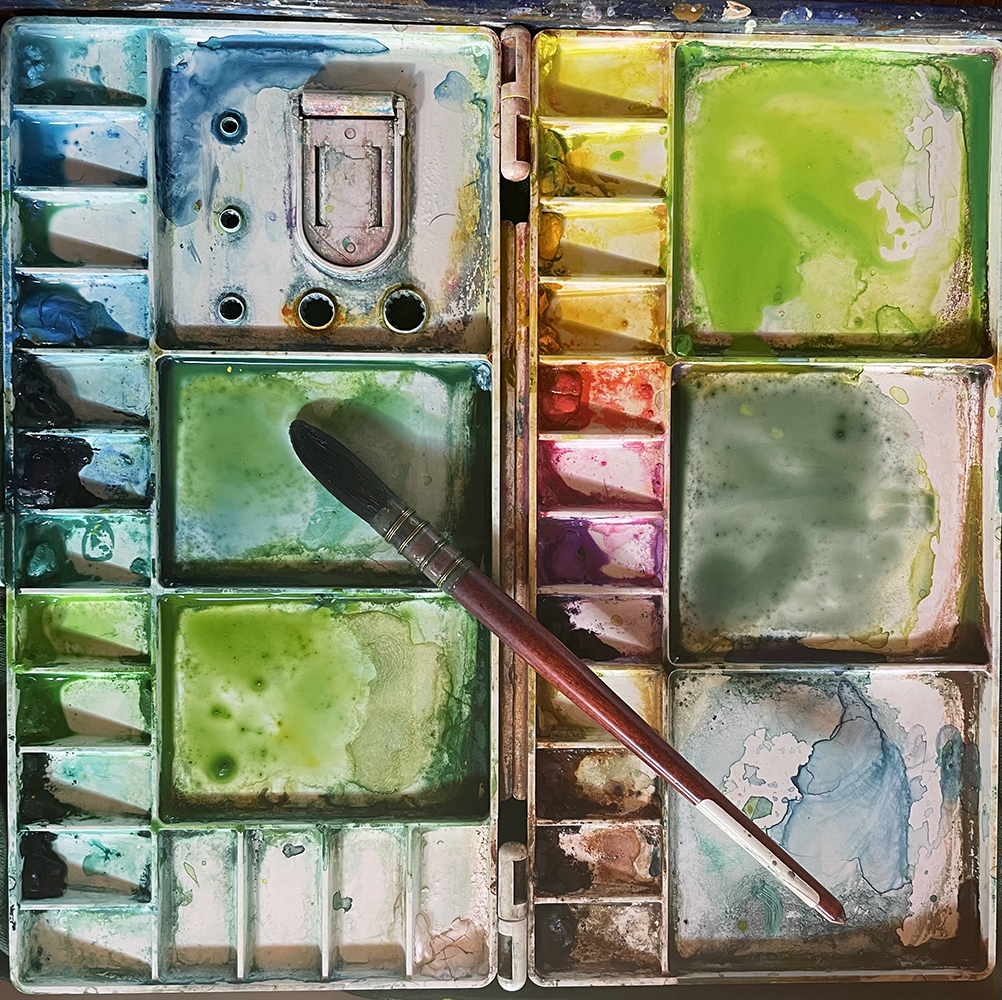
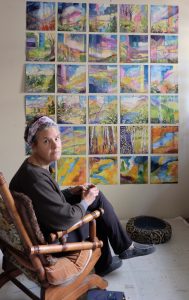
Thank you for being here and reading my musings. If you enjoy my posts I invite you to subscribe to this, my blog so you catch all my occasional musings. And by all means, if you know others who might enjoy these writings, please feel free to share this post with them.
Meanwhile, find more of my stories, insights and art here on my website, www.taosdawn.com. Peruse and shop for my art via my Etsy shop. And please consider joining me for Tuesday Dawnings, my weekly deep breath of uplift, insight, contemplation & creativity.
Stay safe. Be kind.
~ Dawn Chandler
Santa Fe , New Mexico
Me in my studio with my Watercolor Wanderings Series on the wall.
